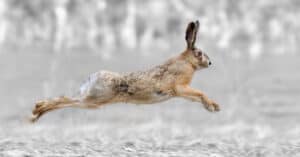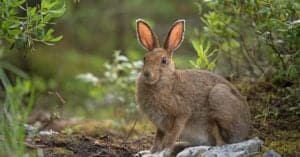America hosts many animals, including the beautiful and ugly, cute and dangerous, wild and domesticated. Among these animals is the Arctic hare, the largest hare in North America.

The Arctic hare has large claws on all four feet, but the ones on its hind legs are unusually long, allowing it to dig into packed ice and snow and build a hole for protection as it flees danger and predators. It can also hop on its back legs like a kangaroo, reaching speeds of up to 30 miles per hour, while it jumps at a speed of 40 miles per hour when running with all four feet on the ground.
Arctic hares are either brown or blue-gray in the summer and white in the winter to help them blend in with the snow. This hare, for its beautiful look, is intriguing to study. Below are some incredible facts about Arctic hares.
1. Arctic hares are relatively abundant

Arctic hares are classified as Least Concern by the IUCN.
©Sophia Granchinho/Shutterstock.com
The International Union for Conservation of Nature (IUCN), an organization that studies the population status of all species, classifies Arctic hares as Least Concern. While there is no exact count of Arctic hares in the wild, their population occurs in vast numbers throughout the North American Arctic and appears to be steady. There is no reason to believe that these species are at risk of extinction in the near future.
2. Arctic hares split up during the mating season

The mating season for Arctic hares is in April or May.
©Sophia Granchinho/Shutterstock.com
Like every other animal, Arctic hares mate, and the mating season for Arctic hares is in April or May. Although these hares frequently congregate in big groups for food and warmth, they disperse during mating and establish individual territories. During this period, males (known as bucks) may spar with females (known as does), with the male physically laying his paws over the female’s back and engaging in a fist fight with other males as he claims his mate.
3. Arctic hare newborns are born with a full fur coat and their eyes open
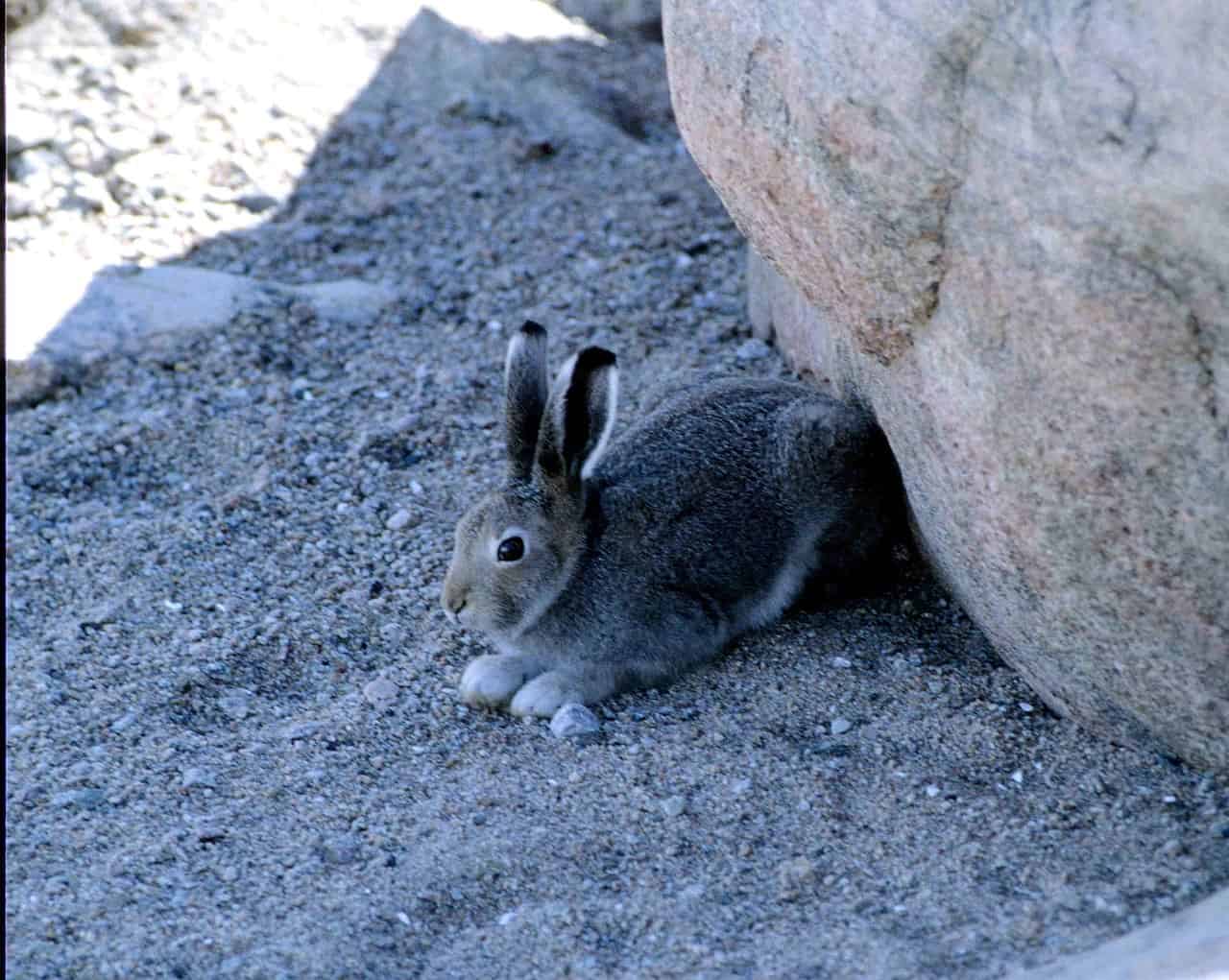
Baby arctic hares are born with full coats of hair that are light brown in color.
©Ansgar Walk, CC BY-SA 2.5, via Wikimedia Commons – License
Females may deliver young ones later in the northernmost portions of the hare’s range. In contrast to rabbit babies, born naked and blind, Arctic hare newborns are born with a full fur coat and their eyes open. They can jump within a few minutes of birth. This allows them to avoid predators from a young age. For the first few days, the mother stays with her newborns, known as leverets, but the young are increasingly left to their own devices when their mother wanders out in search of food.
4. Arctic hares are omnivores
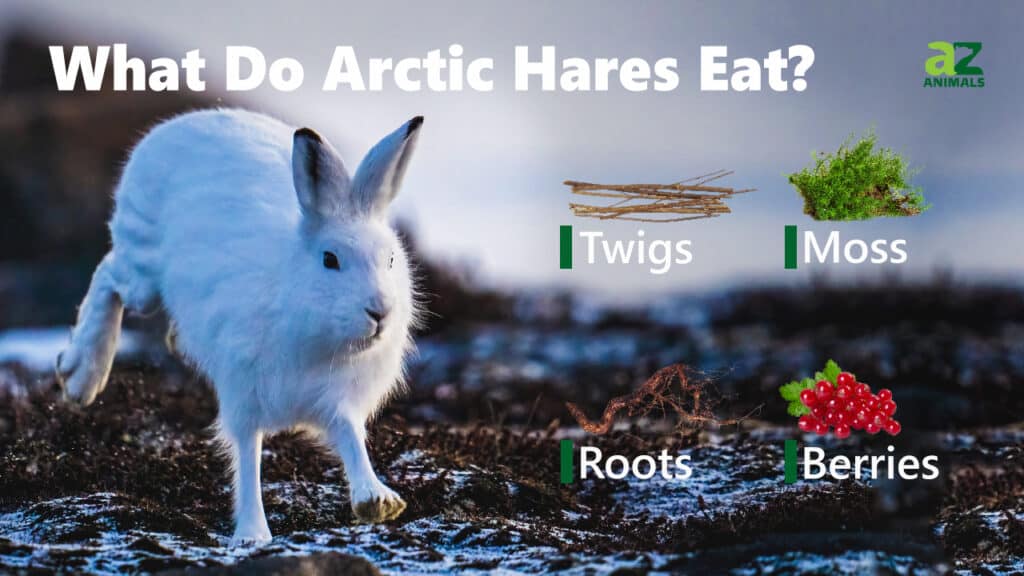
Arctic hares are classified as omnivores since their diet consists primarily of plants, with occasional forays into other food sources. Their typical diet consists of moss, lichen, and other woody plants. Depending on the season, they will also eat berries, buds, roots, leaves, and bark. Arctic hares have been spotted consuming fish and the stomach contents of deceased animals such as reindeer. Because the Arctic tundra may be a hostile environment, this nutritional modification or adaptation helps the hare survive by boosting opportunistic feeding.
5. Northern Arctic hares retain their white color
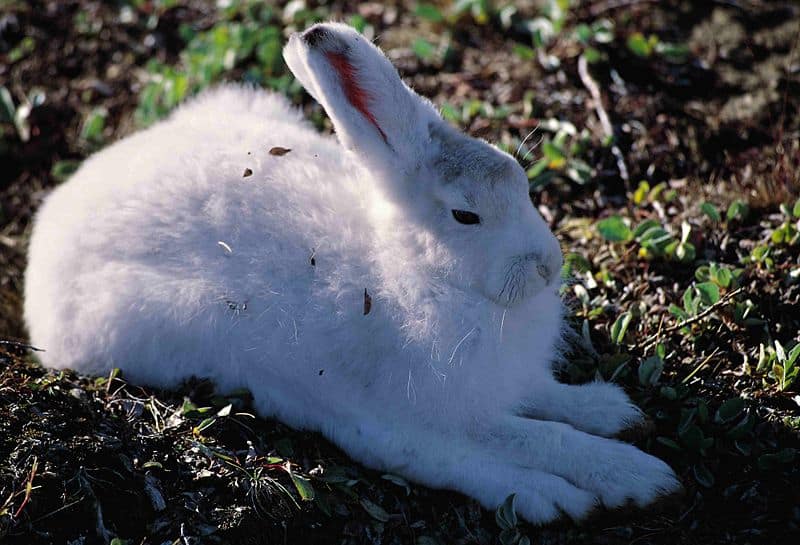
Arctic hares located in the extreme north retain their white fur year-round.
©Ansgar Walk (talk · contribs), CC BY-SA 3.0, via Wikimedia Commons – License
Some people wonder whether Arctic hares are always white or not. Well, hares in the extreme north of the Arctic stay white all year, whereas those in the south molt and replace their white fur with brown fur for more extraordinary camouflage during the summer.
6. Arctic hares are fast and camouflaged

Arctic hares are swift and can run at speeds of up to 40 miles per hour.
©Ansgar Walk, CC BY-SA 2.5, via Wikimedia Commons – License
Hares are somewhat bigger than rabbits, with higher hind legs and longer ears. Arctic hares, like other hares and rabbits, are swift and can run at speeds of up to 40 miles per hour. They are not easily caught. In addition to speed, they have a bright white coat in the winter, which offers good concealment in the country of ice and snow. And in the spring, the hare’s bright white changes to resemble local rocks and plants. This excellent feature somewhat keeps them safe from predators.
7. Arctic hares spend most of their time above the northern tree line on the tundra
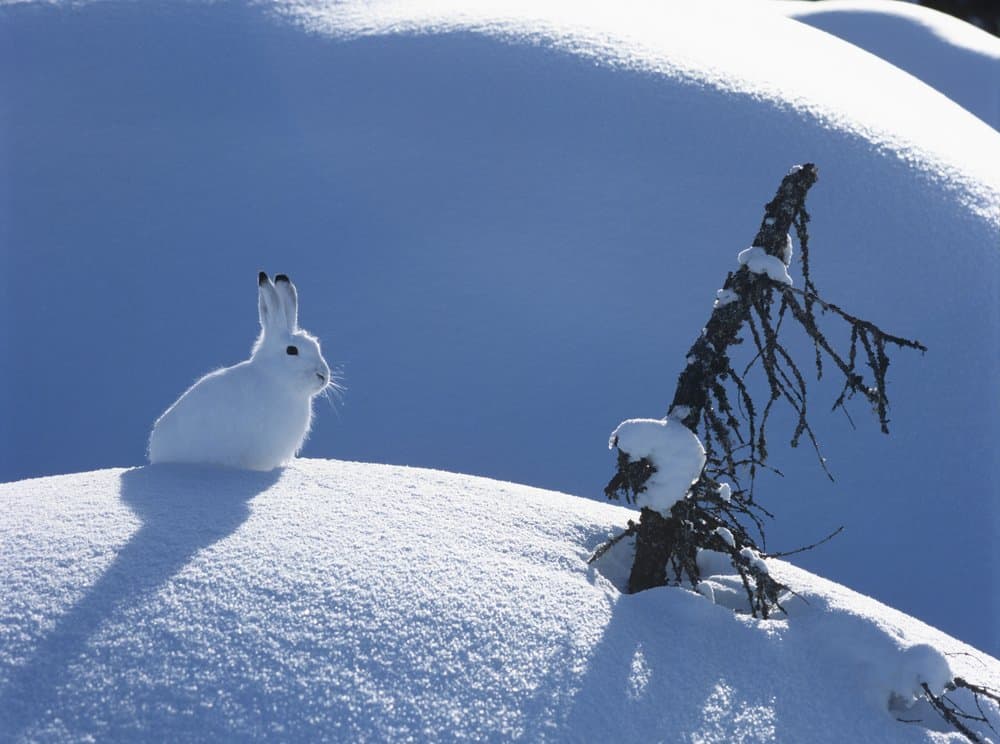
Artic hares prefer keeping above the northern tree line on the tundra, though some migrate below it in winter.
©sirtravelalot/Shutterstock.com
Arctic hares spend most of their time above the northern tree line on the tundra; some migrate below the tree line in the winter. They may dwell at altitudes of up to 900 m. They are not found on sea ice since they are majorly herbivores that rely on terrestrial vegetation for nourishment.
8. Arctic hares have thick protective fur
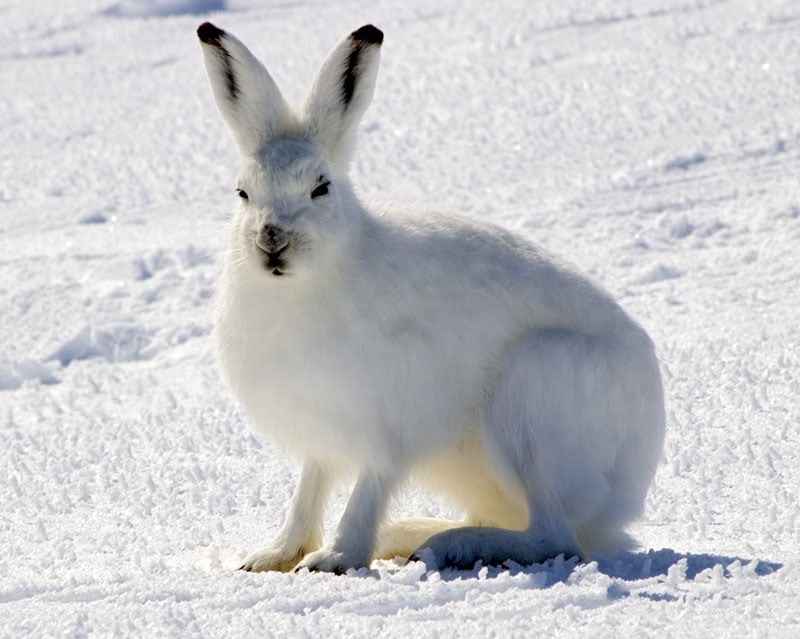
The thick, insulated coat of an Arctic hare helps it survive in the cold climate it lives in.
©Steve Sayles / CC BY-SA 2.0 – License
The coat of Arctic hares is constantly thick and insulating. It helps their adaptation to cold regions. Those hares in the southern sections of their range develop two separate coats for a year, mostly white in the winter and blue-gray in the summer, to help them blend into the terrain all year. Hares in the northern sections of their range keep their white fur.
9. Arctic hares dig burrows under the ground or snow

In extremely cold conditions, Arctic hares will dig snow burrows to keep warm.
©Tanya_Terekhina/Shutterstock.com
During extremely cold weather, they seek refuge in tunnels dug into the earth or beneath the snow to avoid the cold wind and get more insulation from the snow. It is a reasonably straightforward means of escaping the worst of the weather. While the temperature in the snow hole is still around freezing, it can be significantly higher than outside and, of course, protect them from the wind.
10. Arctic hares are social in winter
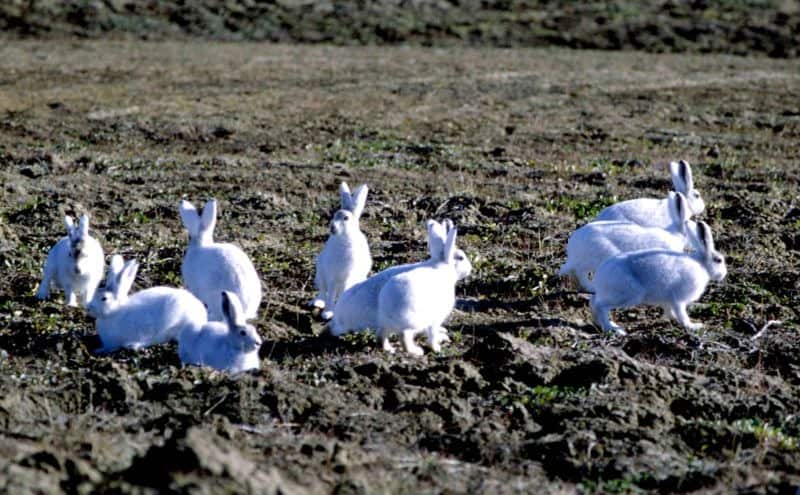
In the winter, Arctic hares mostly live in groups.
©Ansgar Walk, CC BY-SA 3.0, via Wikimedia Commons – License
In the winter, Arctic hares mostly live in groups, and in the worst cold temperatures, living in groups allows Arctic hares to huddle for warmth. This union also allows them to see predators coming up on them and elude them. Once they see a predator, they would run in their numbers, leaving the predator confused about which hare to chase after. Also, this exercise can make the predator get tired and make a kill less likely. This is known as “flocking,” and gatherings might consist of hundreds or as many as thousands. A flock moves and changes direction simultaneously as it is on the move. When the mating season begins in the spring, they scatter once more.
The photo featured at the top of this post is © Sophia Granchinho/Shutterstock.com
Thank you for reading! Have some feedback for us? Contact the AZ Animals editorial team.




